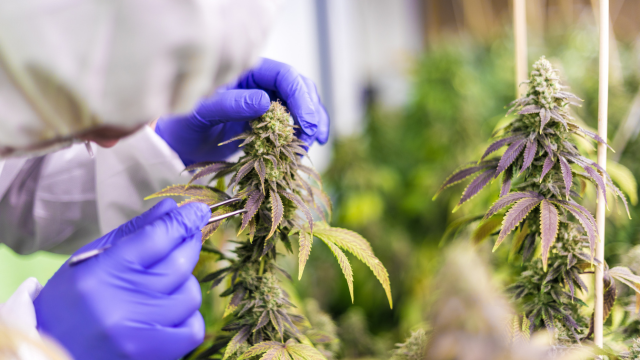Many cannabis enthusiasts who have had their fair share of weed strains may eventually turn to growing their own strains. Growing cannabis at home can be a fun activity for any cannabis regulars who want to try a new hobby or share it with their friends. Before you dive in headfirst, here are a few frequently asked questions about how to grow cannabis that might help guide your process.
Is it legal to grow your own weed in the US?
Growing weed in the United States has varying legal restrictions from state to state. For example, it is legal to grow weed in Illinois as long as it is for personal, medicinal use. This means that you need a license to grow weed in many states, Illinois included. If you’re not sure about whether or not it is legal to grow cannabis in your state, be sure to do some research online first.
How much weed can you grow legally?
Obviously, you aren’t allowed to grow any cannabis in some states, but for the states that allow you to grow weed, the amount varies. With a few exceptions, most states allow you to privately grow 3 to 6 plants at once as long as you have a license. In the state of Illinois, the maximum amount of cannabis that you can grow in a household is five plants.
How long does it take for weed to grow?
The complete cannabis growth cycle has some variance depending on the growing conditions and the type of weed you’re growing. On average, the four stages of growth for a cannabis plant, the germination stage, the seedling stage, the vegetative stage, and the flowering stage, will usually take around three to six months.
What do I need to grow weed?
If you’d like to grow weed at home, you’re going to need a lot of cannabis-growing supplies to ensure that your plants grow properly. In addition to seeds or sprouts for your favorite cannabis plants, you’ll also need to shop for:
- A strong cannabis grow light that can provide 18-24 hours of warmth each day
- Plenty of ventilation, usually accomplished with fans
- Containers or pots filled with nutrient-heavy soil
- Trellis or netting to support and train your plants during the flowering stage
What are the best growing conditions for weed?
The best growing conditions for a marijuana plant are slightly different than those of a traditional house plant. In its early stages, a cannabis plant needs anywhere from 18 to 24 hours of sunlight each day. These plants prefer a warmer climate, with daytime temperatures in the 70s and 80s. Cannabis plants also thrive in a moderately humid area, with 40-60% humidity. Choose soil that is slightly acidic and fertilizer with a lot of nutrients.
How do you grow weed indoors?
To create the best growing conditions for weed indoors, start by choosing an area with good ventilation, temperature control, and access to electricity. If you’re growing cannabis from seeds, start with a small pot with mild nutrients in it to help the plant grow. Since you won’t have any sunlight, you’ll need to warm your plants with a grow lamp for 18-24 hours a day. As the cannabis plant grows, transfer it to a larger pot (with the proper soil and nutrients) as necessary.
How do you know when to harvest marijuana?
Usually, when you buy seeds, there will be information about when to harvest the marijuana plant. Nevertheless, a few telltale signs that your plants are ready for harvesting are their color and their trichomes. Specifically, when the leaves start turning yellow, and the trichomes on your buds start to appear foggy, your plant is likely ready for harvest. After harvesting your plants, leave them in a dry, dark room with plenty of ventilation until they dry out.
While growing cannabis at home can be a fun side project, keep in mind that the upfront costs for all of the equipment will be higher than if you were to buy from a dispensary. If you want to shop from a large variety of cannabis products without the hassle, you can always buy from your local dispensary in Rosemont and Addison. To learn more, you can always read about buying vs. growing your marijuana on our website.
Do you grow your own medicine? Hit me up on social media, and let’s spark up a conversation about it!
